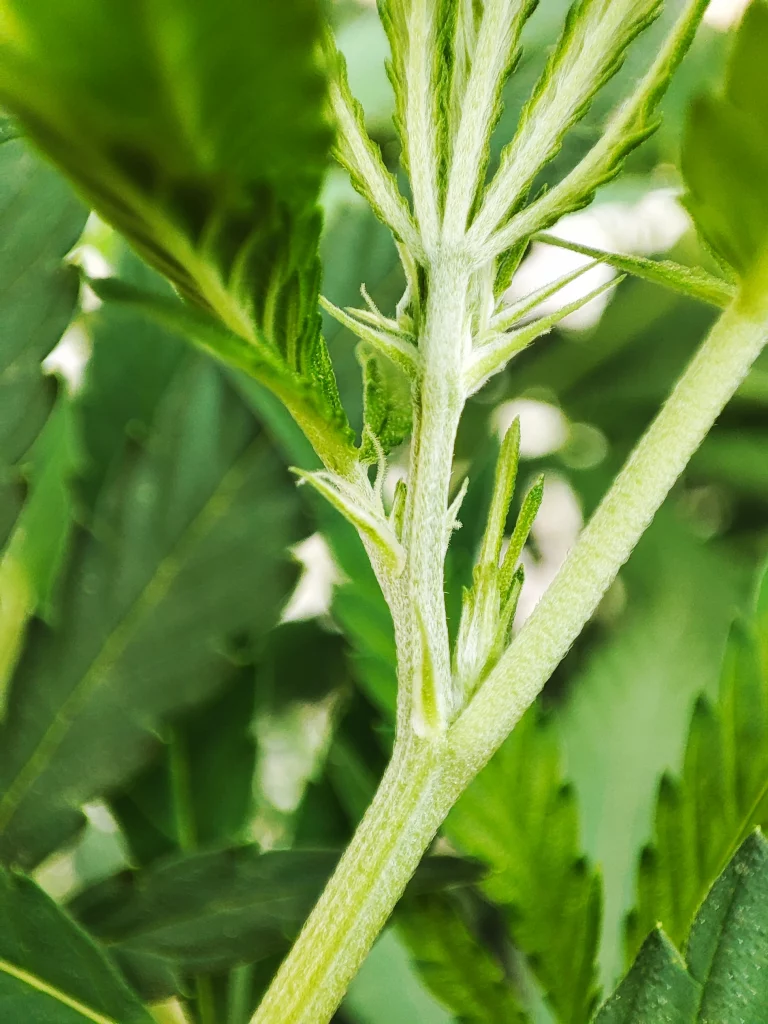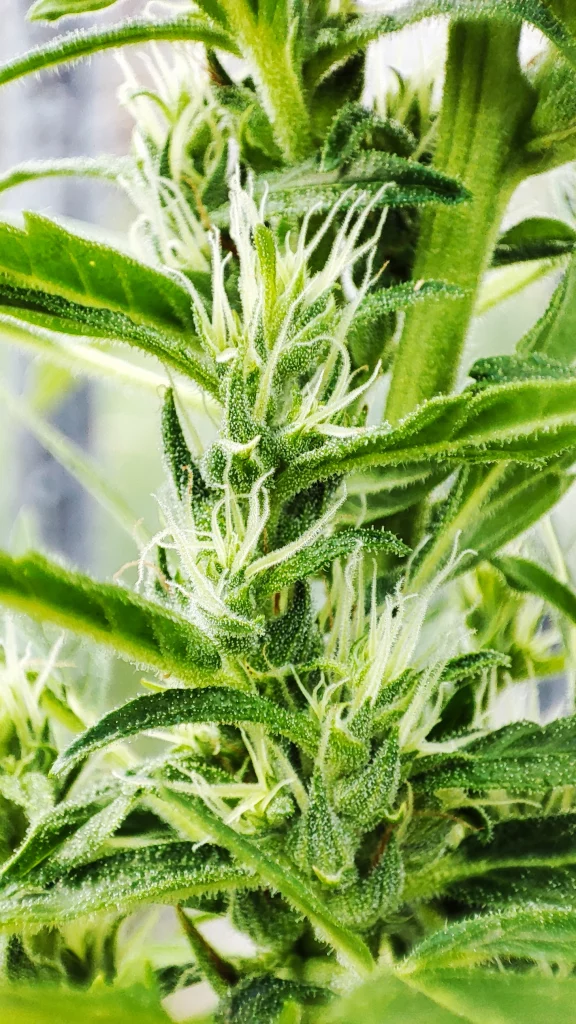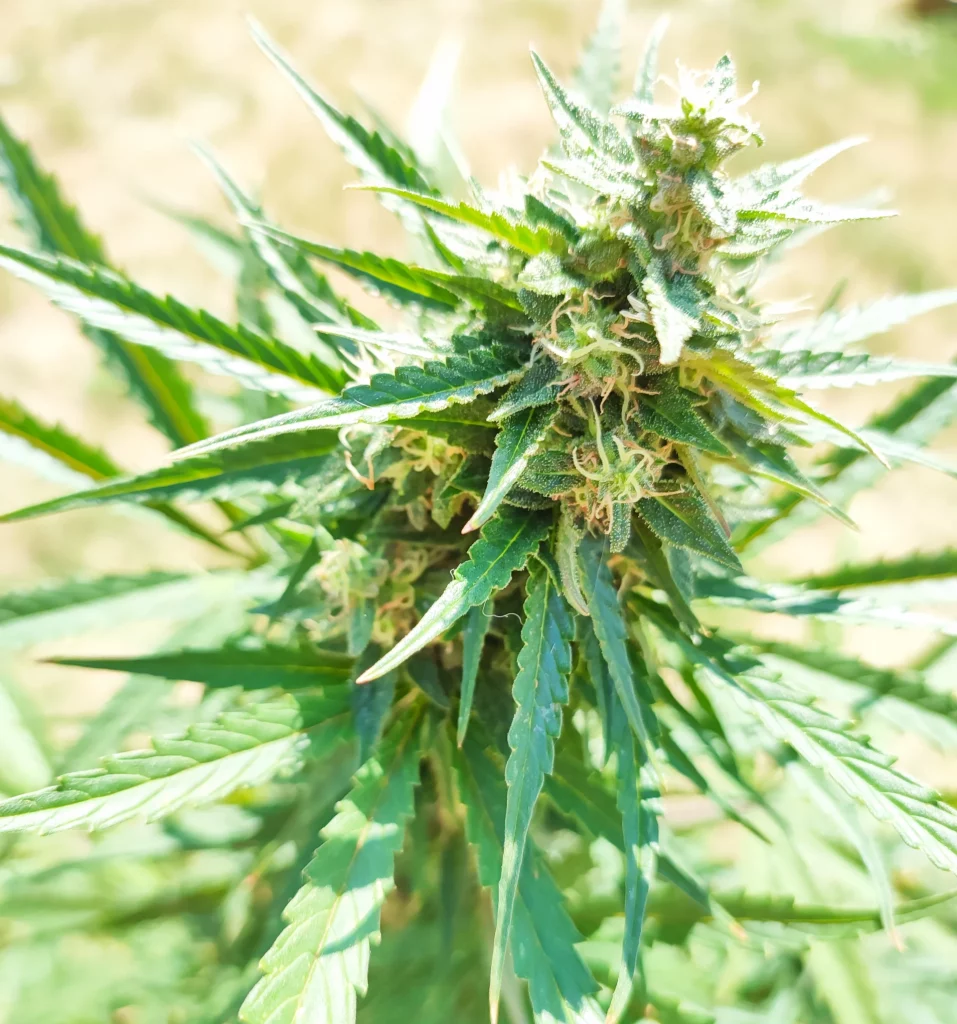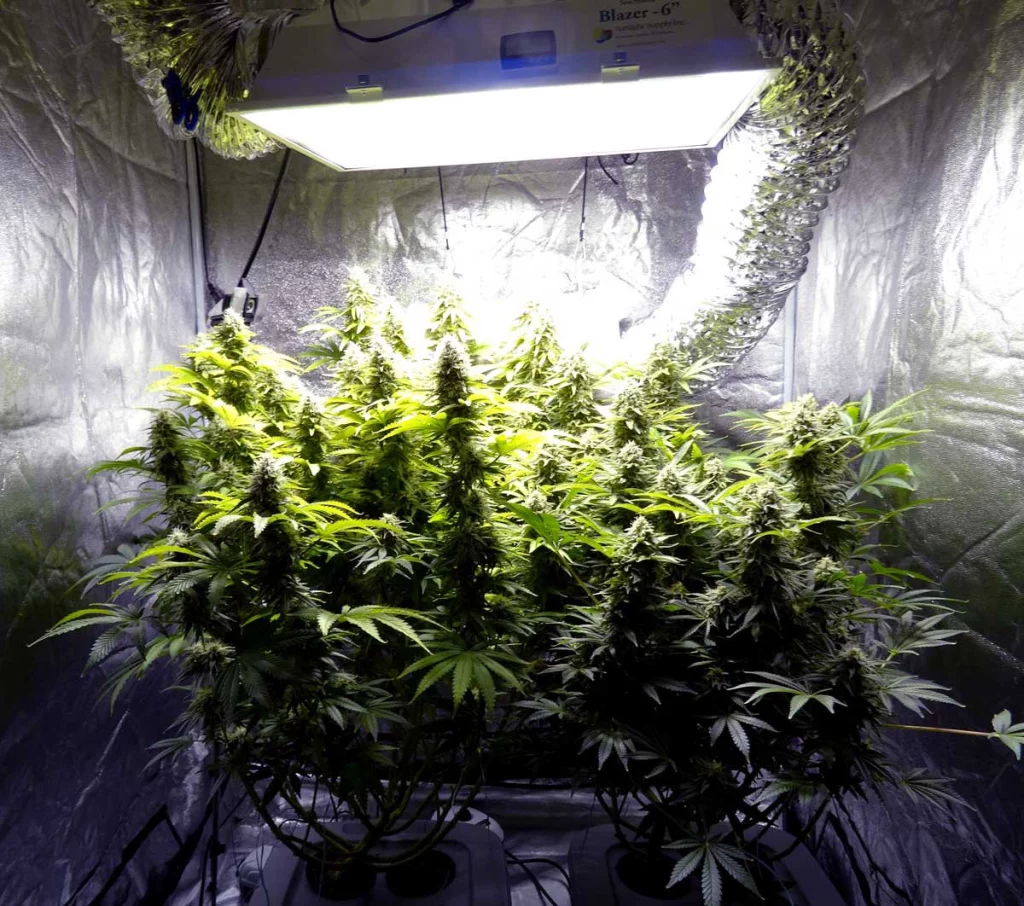English
During the flowering phase, marijuana plants concentrate on the production of precious buds. Colas starts to appear, plants form trichomes and start secreting a resin full of cannabinoids and terpenes.
Cannabis plants have specific requirements during the flowering phase and require different amounts of light and nutrients than in the vegetative phase. Adjusting the optimum temperature and humidity can also work wonders to prevent mould and increase the quality of cannabis flowers. To achieve a bountiful harvest, just follow this guide.
During the growing phase, your marijuana plants will grow in size, develop a massive structure and lots of little flower leaves. When female cannabis plants sprout little white pistils from their nodes, they signal that they are mature and it’s time for the flowering stage. During this phase, flowers grow and a profile of cannabinoids and terpenes develops.
Flowering phase
Flowering phase starts naturally with the autumn season, while indoor growers need to start the flowering phase by changing the light cycle from 18-6 to 12-12 hours of light and dark. Before we get into the details, it’s important to note that the main mistake marijuana growers makes during the flowering phase is over-fertilizing their cannabis plants. Just because flowers are forming doesn’t mean that marijuana plants need to be boosted with fertilizers and boosters- this often leads to nutrient toxicity.
In general, less nutrients yield better results. If a nutrient deficiency is detected, the necessary substances should be added to the feed. In our article on nutrition, you can learn to detect deficiencies.
Preflowers
Usually the flowering phase is considered a singular phase, however there are some nuances that are valuable to distinguish for best results. When white pistils (hairs) begin to appear in the nodal areas, this indicates that the pre-bloom stage has begun. At this point, indoor growers switch the light cycle to 12-12, signaling to the plants that the fall season has begun and it is time to produce flowers. It is important to continue to fertilize plants regularly and slightly move it to the P-K (phosphorus and potassium) side to allow flowers to develop.
Novice marijuana growers often switch from nitrogen-rich vegetative fertilisers to high P-K fertilisers, which often ends in disaster. At this point, the flowers have barely formed, so they only require trace amounts of nutrients. In the pre-bloom stage, more pistils and larger calyxes (cannabis flowers) form in the nodes, leading to the next stage.
Early flowering
The calyxes enlarge and the pistils elongate. This is the early flowering stage. At this stage, the plants are still growing in size and may elongate considerably depending on the genetics of the variety. The buds will require a little more P-K at this stage, so we are still continuing to replace nitrogen with phosphorus.
Peak flowering stage
The peak flowering stage begins when the flowers join together to form a long set of green calyxes and white pistils. At this stage, cannabis plants should be receiving more P-K as the cones are now greatly enlarged. At this stage, cannabis growers need to pay very close attention to environmental conditions and fertilisation. If something goes wrong at the peak flowering stage, the cones will not get much bigger.
At this stage, the cannabis plants will stagnate in growth and devote most of their energy to producing inflorescences. Large cannabis plants may need support (mostly indoors and greenhouses). The cannabis buds are filled with water and may be too heavy for the stems, which may crack under their weight. At this stage, trichomes begin to form and develop cannabinoids and terpenes.
Flower ripening stage
Here is the last part of the flowering stage, the ripening stage. At this stage, the flowers are already quite large, dense and heavy. The white pistils begin to curl and turn color to darker shades. The trichomes change from clear to misty and amber. If we want more of the uplifting effects of the cones, we should harvest them when the trichomes are mostly milky. If you want to achieve more sedative effects, you should wait until some trichomes turn amber.
During this phase, the amount of nutrients supplied should be gradually reduced and nitrogen should be virtually eliminated from the mixture. In the 1-2 weeks before harvest, the cannabis plants should be stripped of any nutrients that are no longer desired. This is usually done by flushing the soil with clean, pH-controlled water or by using special agents, so that the plants can use all the nutrients they have accumulated.
You can read all about flushing cannabis plants in our next article. During ripening, the leaves slowly turn yellow and start to fall off, this is a good sign at this point. When the flowers are fully ripe, it is time to harvest.
NUTRIENTS IN THE FLOWERING SEASON
Nutrients in the vegetative phase must be rich in nitrogen. As mentioned above, during the flowering phase, a gradual switch to more P-K based nutrients should be made.
Nutrient feeding
During the growing phase foliar fertilisation is easy, but during the flowering phase we want to avoid spraying the marijuana flowers. When the buds start to enlarge, foliar fertilisation should be avoided altogether.
THE BEST CONDITIONS IN THE GROWING ROOM FOR THE FLOWERING PERIOD
Light:
Lighting during the flowering phase should be stronger in the red wave spectrum as opposed to the “blue” wave spectrum during the growing season. The light cycle should be switched to 12-12 when growing indoors, unless they are autoflowering cannabis plants that can tolerate longer periods of light.
Temperature/humidity:
For photoperiodic cannabis plants, it is advisable to mimic the differences between summer and autumn by shortening the light cycle and lowering the temperature slightly. The humidity should not exceed 50 %, otherwise the cones may start to rot. Therefore, it is better to keep humidity at 40% than at 60%. It is also advisable to add a fan at flowering time.
pH:
The best pH for cannabis grown in soil is 6.0-6.5, for growing in a hydroponic environment 5.5-6.0 pH.
Ventilation/circulation:
Good air circulation is important at every stage of growth. During the flowering phase, it should be taken into account that the cones give off a characteristic smell that can be easily detected.
Published by Peca Sarm
25/08/2022choose and buy cannabis seeds from our offer
our pleasure





























